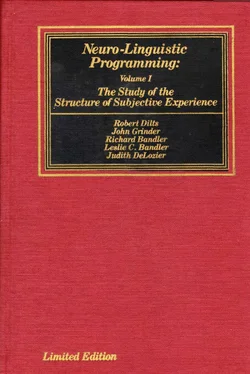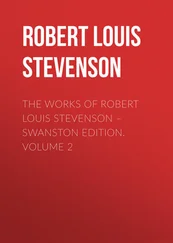One interesting choice as a communicator is to take people's language literally. When someone says, "I see what you are saying," you may legitimately respond, "How interesting! What color is it?" We accept that when a lawyer says that you should look at every issue from a number of perspectives, she is telling you to use your visual representational system. When a politician tells you that he feels frustrated, we accept that his kinesthetic representational system has the highest signal at that point in time. When business executives say they have heard about NLP, we accept that they acquired that information through their auditory representational systems. When an auto mechanic says, "That experience left a bad taste in my mouth," we accept that the experience has in some way become associated with a gustatory representation. Even in idiomatic language like, "I smell a rat," we accept that the individual has employed at some point, probably through synesthesia, their olfactory system, or, in other idioms, whatever sense has been referred to.
Some other examples of sensory specific predicates are:
a) Visual — I can see the pattern now; I just can't picture myself doing that; That looks like a good idea; I need a clearer image of the problem; I just go blank; That casts some light on the subject; Looking back on it now I can begin to see the light; An enlightening and colorful example.
b) Auditory — That sounds about right; I can hear your unwillingness; Does that ring a bell; Everything suddenly clicked; There's a lot of static inside my head; I can really tune in to them; Ask yourself if it's right and listen carefully for the answer; There is this idea that's been rattling around in my head; That has a negative tone to it; Something tells me the time is now.
c) Kinesthetic — I feel like I'm still reaching for an answer but I just can't seem to get a handle on it; It's a heavy problem; Things got pretty intense; I need to get in touch with my blocks; He's got a solid understanding of what's involved; She is so cold and insensitive; I have a feeling something is about to happen; Walk me through it.
We have presented these predicates only in terms of the three major representational classes. It will be up to you to determine from the context whether the individual is referring to internally generated experiences within the particular representational system, or whether that experience is being drawn (or was drawn at the time it occurred in the strategy) from external sources. It should be fairly obvious that when someone says "I can't picture that," or "I'm going blank, " that they will be referring to internal activity; and that when people say "Did you see that?", or "Look what you've done", they are directing visual attention externally. Similarly the difference should be fairly distinct between "That really strikes a chord, " (auditory, internal) and "I could hear the anger in his voice"; (auditory, external) and between "I felt bad about what happened" (kinesthetic, internal), and "Your muscles feel very tense" (kinesthetic, external). Others will be somewhat more unspecified like "I just couldn't see it," "It sounds pretty good," and "I kept feeling around for it."
We choose not to go into detail for the olfactory and gustatory senses because, in this culture at least, they are not used prominently for organizational strategies, although they are excellent triggers for past 4–tuples. A certain smell or taste can rapidly catapult you into a transderivational search. This is common for such experiences as the smell of the doctor's office, the smell of a former lover's perfume or cologne, the taste of castor oil, the smell of your father's aftershave, etc. [16] The neural set of pathways carrying olfactory information is the only set of pathways of the five senses which does not pass through the thalamus (considered to be one of the "decision centers" by psychophysiologists) en route to the cerebral cortex.
Even though it seems that, to most people in this culture, being lead around by the nose stinks as an organizational strategy, we hope that you don't allow your ability to hear these predicates sour. Hopefully we have given you a sufficient taste of how to identify them that you can follow the scent and sniff them out for yourself.
Predicates, then, may be used to identify the steps in an individual's strategy. For example, a woman who had never heard of the notion of predicates and their connection to representational systems was being introduced to the significance of eye position in NLP. In the course of conversation the woman spontaneously responded, "You know, I really feel (K i) that I can see (V i) what you are saying (A e) better when I don't look (V e) at you as I listen (A e) to you." Even though she had no conscious awareness of the significance of her words, the woman gave the author an explicit description of her strategy for making sense out of the ongoing interchange. As she listened to the external auditory output of the author (A e) she would make internal images from the words the author was saying (V i). She would then test the images (most likely against remembered images from her personal history), check the results through her feelings (K i), and decide whether to operate (probably by asking the author more questions (A e) about what he was talking about, based on her internal images) or exit, accepting the verbalizations the author was offering to her. If she watched the author, however, looking external to herself (V e), the incoming visual sensations would interfere with her internal construction and testing process. Externally and internally initiated experiences within the same representational system tend to interfere with one another because they share the same neural pathways in the brain; a high external signal tends to mask internal visual experience and vice versa. This inverse function between internally and externally generated experience exists within all of the representational systems.
Because she had a kinesthetic check, then, this woman became aware of the interference between her internal and external representations through her feelings. Using the 4–tuple notation we would show this strategy in its most elegant form as:

As you listen to predicates, pay attention to those which may be unspecific with respect to representational systems. Words like "light" may be interpreted kinesthetically or visually. Adverbs like "clear" may also apply to more than one representational system —you may hear something clearly as well as see something clearly. Many words like this will be specified, of course, through context, or through accessing cues (which we will detail later).
Words like "understand," "identify," "sense," "know," "think," "become aware of," "notice," etc., are also unspecified with respect to representational systems. Each of these processes may occur through any of the representational systems. A good rule of thumb to employ when confronted with words that you are not sure of, a rule that applies to all elicitation procedures, is: when in doubt, ask. And keep asking (operating) until you get a description that is sensory specific.
For example, suppose you have asked somebody how they begin their creative strategy and they answer, "Well, I just start getting into it." This verbalization is not specific with respect to the representational system they are using, so you will want to ask, "How specifically do you 'get into it'?" In response to this question the person replies, "I start thinking about all of the things I could do with it." Again their response is unspecified with respect to their sensory process, so you ask, "How specifically do you start 'thinking' about all of the things you could do?" The person answers this question with, "I just look at it and start to see all of these ways of using it." With this answer the individual has identified the first two steps in the strategy: "looking at it" (visual, external — V e) and "see all these ways of using it" (visual, internal — V i). Note that the internal visual representations follow the external input, so that there will be no interference.
Читать дальше












